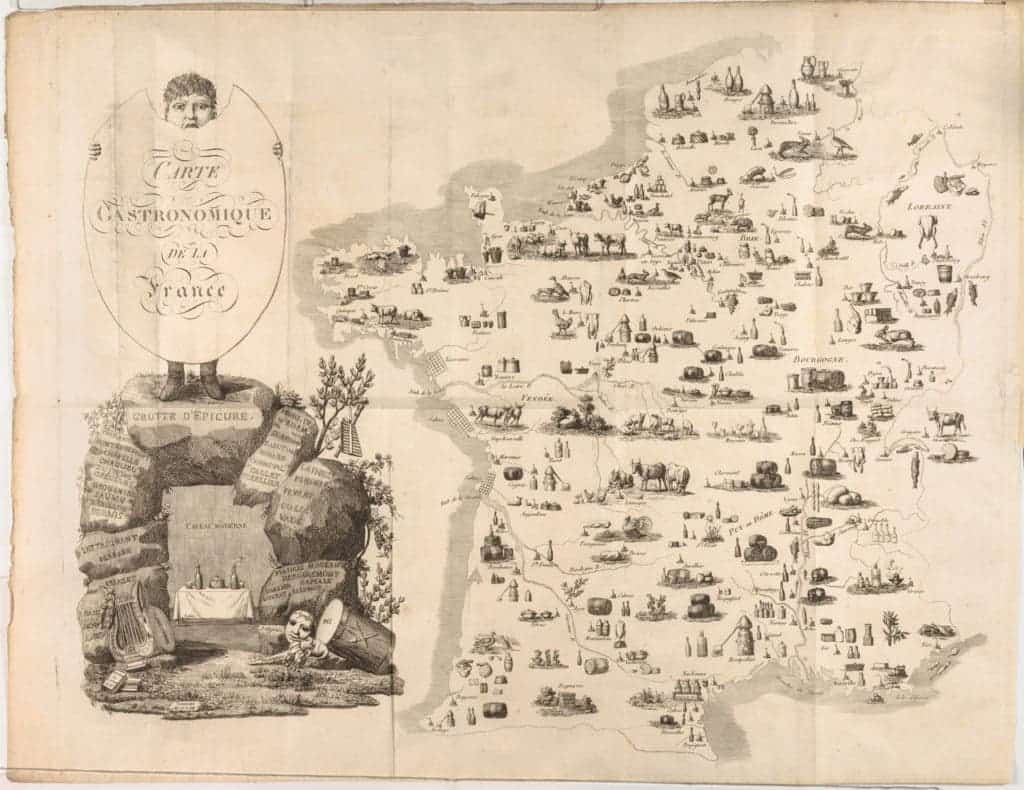Everyone knows French cuisine is simply spectacular – and it has been for centuries. But this 1809 map wanted to show just how spectacular it is. Meet the Gastronomical Map of France.

With beautiful drawings, the map illustrates the major cuisine products from France and highlights their origin. It was created by Jean François Tourcaty in 1809 as an attempt to show that French gastronomy is the best in the world. Many of the world’s favorite products (champagne, cognac, brie, roquefort) originate from cities or areas which carry their name. Even today, it is surprisingly relevant – although modern life has also taken its toll.
For instance, I doubt most people would enjoy fish from the polluted Parisian waters, and hunting at Versailles has not been a pastime for decades. But herbs are still the pride of the southeast, expansive vineyards still cover the Bordeaux region, and of course – there’s the cheese.
The map was published by the Cornell library. Its accompanying page reads:
This striking map is found at the outset of the “Cours Gastronomique” by Charles Louis Cadet de Gassicourt. It is “the first example” of a carte gastronomique, “a map that summarizes a country not by its cities, mountains, or rivers but by its products.” Ferguson 2004, 46. Although this map locates the regional sources of production (reflecting chapter xxviii of the book), it is less a geography lesson than a testament to the depth and variety of French food and wine.
Cadet de Gassicourt was an illegitimate son of Louis XV who became a lawyer, chemist, apothecary and prolific author. Consistent with his scientific background, his “Cours Gastronomique” was aimed at “making scientific knowledge an obligatory part of gastronomic expertise.”

Food was a central part of cultural events in that day, and few philosophical or scientific discussions were held in the absence of a rich meal. In fact, food wasn’t just a physical need, but a source of great enjoyment, knowledge, and cultural richness.
So if you’re in France and you don’t know what local food to enjoy first or if you want to know more about the delicious traditions of the country, the Gastronomical Map of France can definitely help you.
Was this helpful?




